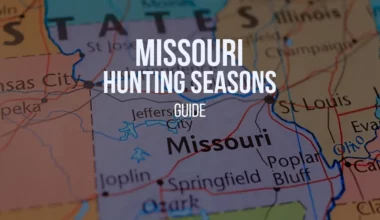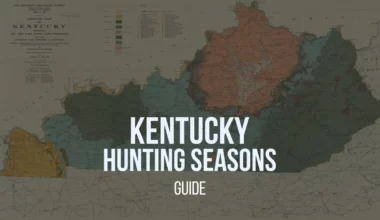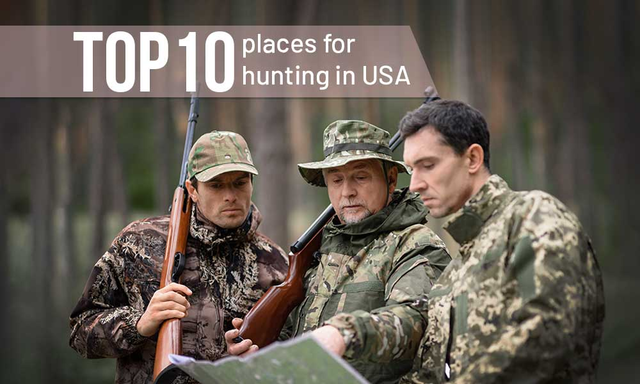Hunting in northern states has a very distinct character to it. And you don’t need to stand guard at the foot of the Rocky Mountains to snatch a good hunting opportunity. There are plenty of animals, both big and small game, in every region of the state for you to hunt. The majority of hunting seasons of 2024 are yet to open, but if it’s turkey you are after, you can still hop onto the spring hunt train. If not, well, in this guide we cover all Wisconsin hunting seasons for 2024-2025. Choose whatever you like.
Table of Contents
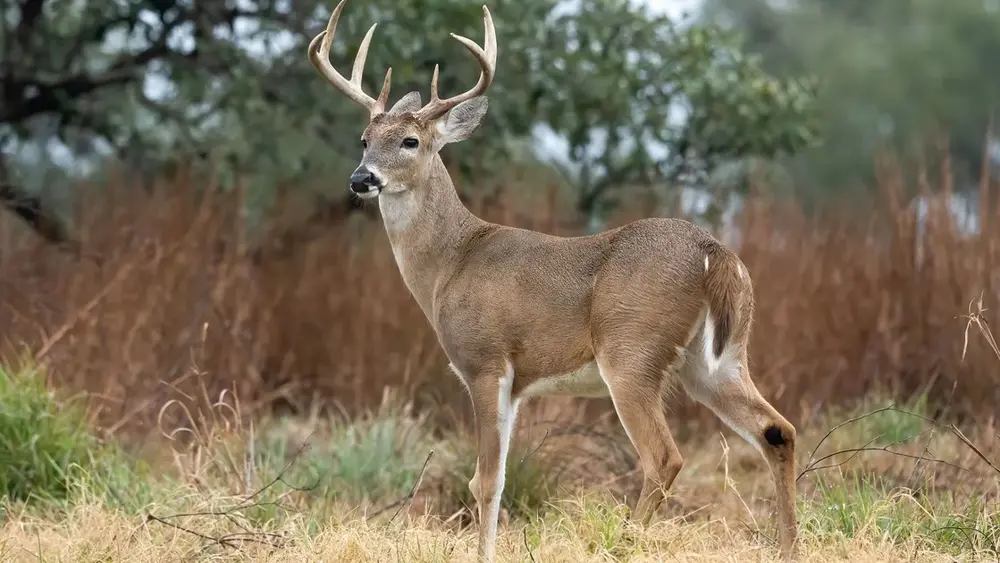
Deer Hunting in Wisconsin
If we were to choose the nation’s favorite game species, deer would leave everyone biting the dust. Even though hunting opportunities vary significantly from state to state, one thing remains consistent wherever you go: deer hunting. Wisconsin offers a plethora of deer hunting opportunities and here’s how they are regulated.
Deer Season Dates
The 2024-2025 deer hunting season dates in Wisconsin are as follows:
Archery & Crossbow | Sept. 14, 2024 – Jan. 5, 2025 |
Archery and Crossbow *Metro Sub-units and counties with extended archery seasons* | Sept. 14, 2024 – Jan. 31, 2025 |
Youth Deer Hunt | Oct. 5-6, 2024 |
Gun Deer Hunt For Hunters with Disabilities | Oct. 5-13, 2024 |
Gun | Nov. 23 – Dec. 1, 2024 |
Muzzleloader | Dec.2-11, 2024 |
Antlerless Deer | Dec. 12-15, 2024 |
Antlerless-only Holiday | Dec. 24, 2024 – Jan. 1, 2025 |
Deer Hunting Licenses
To participate in deer hunting in Wisconsin, hunters must obtain one of the following licenses, along with a valid, unfilled harvest authorization:
- Gun Deer License: For harvesting deer with a firearm.
- Archery License: For harvesting deer with a bow and arrow.
- Crossbow License: For harvesting deer with a crossbow and arrow.
An upgrade is required for those with an archery or crossbow license who wish to use both weapons.
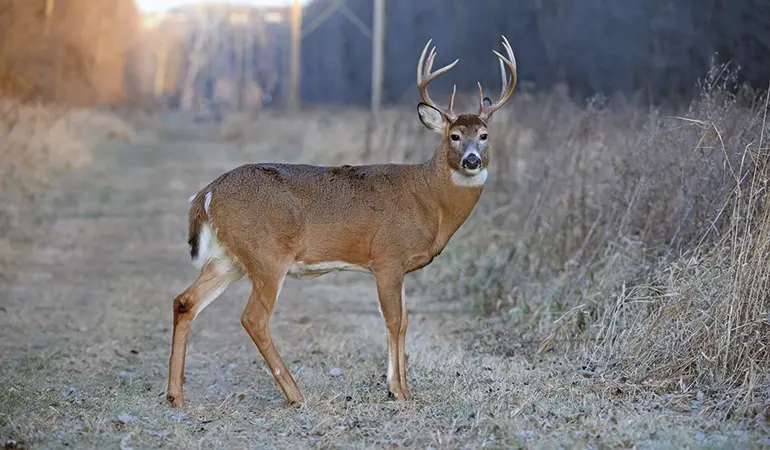
Deer Hunting Regulations
Buck Harvest Authorizations
Issued with each deer hunting license, Buck Harvest Authorizations vary based on any given location.
Gun Buck Deer Harvest Authorization is valid statewide and allows for the harvest of one buck deer with any legal weapon type, except during antlerless-only hunts.
Bow Buck Deer Harvest Authorization is valid statewide and allows for the harvest of one buck deer by bow or crossbow, except during antlerless-only hunts.
Bonus Antlerless Harvest Authorizations
Available for purchase since August 14, these authorizations allow hunters to harvest one antlerless deer with any weapon during the designated season. Authorizations are sold on a first-come, first-served basis with a purchase limit of one per person per day. Authorizations are only valid in the specified zones.
Deer Hunting Hours
30 minutes before sunrise to 20 minutes after sunset, with zone-specific times for some areas.
Deer Baiting and Feeding
- Hunters can place up to 2 gallons of bait per 40 acres on each contiguous parcel of land under the same ownership, with the provision that this bait cannot be consolidated into more than one pile if it exceeds two gallons per 40 acres.
- Bait sites must be spaced at least 100 yards apart from each other and cannot be within 50 yards of public trails, roads, campsites, or 100 yards of roadways with speed limits of 45 mph or higher. Baiting is permitted from 12 a.m. the day before the archery season opener until the end of all deer seasons for that year.
- Hunters are prohibited from using bait or feed containing any animal parts or byproducts, and such materials must not be encased in metal, paper, plastic, glass, wood, or similar materials, although liquid scents are exempt from this rule.
Deer Carcass Transportation
- It’s illegal to move whole deer carcasses and parts, except for certain items, out of CWD-affected counties unless going to an adjacent county or a licensed taxidermist/meat processor within 72 hours post-registration.
- Items allowed for unrestricted transport include processed meat, quarters without spinal column parts, deboned meat, non-head attached hides, fully processed taxidermy heads, antlers, clean skulls or skull plates without lymphoid/brain tissue, and upper canine teeth. Processors or taxidermists receiving carcasses from CWD zones must be notified of the origin.
Possession and Sale of Deer
- It is illegal to possess a deer with altered or removed antlers that hinder determining its legality, especially if taken during an antlerless-only season. Hunters must have a valid proof of a deer harvest authorization to possess a deer carcass legally.
- The sale, purchase, or barter of any deer or parts thereof is largely prohibited, with exceptions allowing the sale or barter of detached heads, skins (excluding those in a spotted coat), and antlers (not in velvet). Additionally, it is unlawful to possess albino deer without special permission from the department.
- While deer with velvet antlers or in a spotted coat can be legally harvested during the open season, their velvet antlers and spotted hides cannot be sold or transferred, nor can albino and all-white deer be harvested, preserving their uniqueness and biodiversity.
Harvest Report & Tagging
- Registering a Harvest: Must be done through GameReg by 5 p.m. the day after recovery. Registration can be done online, by phone, or in person at designated stations.
- CWD Testing: Free. Recommended but not required.
- Deer Carcass Transportation: Regulations apply, especially for deer harvested within CWD-affected counties.
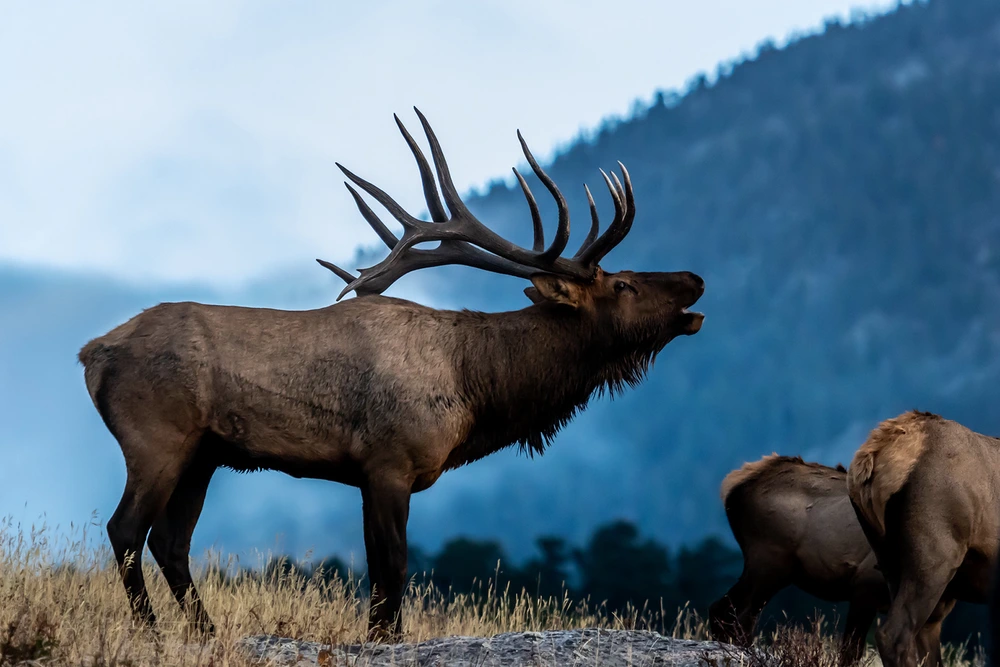
Elk Hunting in Wisconsin
Native to Wisconsin, elk are one of the greatest examples of successful restoration efforts. Unregulated hunt and habitat loss caused the elk population to die out back in the 1880s. One century later, 25 specimens were transferred from Michigan, heralding the advent of a new generation of elk in Wisconsin. As of 2023, there were approximately 515 animals in the state. Today, elk hunting is a part of elk management efforts, and it is regulated in a very peculiar way.
Elk Season Dates
Archery, Crossbow, and Firearm | October 12 – November 10 December 12 – 20 |
Elk Hunting Licenses
Licenses for elk hunting are awarded through a drawing process, which is open exclusively to Wisconsin residents. The application period runs from April 10 through May 31 (so go to Go Wild if you haven’t registered yet). This year, for the first time since the reintroduction of elk hunting in Wisconsin, both the Black River Elk Range and Clam Lake Elk Ranges are open to hunting. Hunters need to choose between the two when applying for a license. The annual quotas are expected to be from two to four bull tags in the central herd and seven or eight bull tags in the northern herd. Application fees are set at $10, seventy percent of which is allocated for elk management and habitat improvement efforts.
Elk Hunting Regulations
All license winners are notified in early June and must attend a mandatory elk hunter education course before purchasing their elk hunting license. The course is free but mandatory and the license itself is priced at $49.
Elk Bag Limits
Only one bull elk may be harvested. This selective harvest strategy aims to maintain a healthy balance within the elk population.
Elk Legal Hunting Hours
Hunting hours align with Big Game Shooting Hours and are set at 30 minutes before sunrise to 20 minutes after sunset. Since the time of both changes from day to day, we recommend taking a look at Elk Shooting Hours docs, available on the corresponding Wisconsin Department of Natural Resources page.
Elk Harvest, Report & Tagging
- Elk may be divided into as many as five pieces. The head must remain attached to one of the five parts of the carcass, and the bones must stay as part of each piece. Elk cannot be “boned out,”. If removed, the hide and lower legs do not count as one of the five parts. All parts must be removed from the field except the internal organs
- Upon harvesting an elk, hunters must immediately validate their elk carcass tag and attach it to the elk if they leave the animal temporarily.
- All harvested elk must be registered by 5 p.m. the day after recovery, necessitating in-person registration with a local wildlife biologist.
- GameReg is not available for elk registration; instead, department staff will enter the elk into GameReg after in-person registration, and hunters will receive a confirmation number.
- Hunters are provided with tissue sampling kits at their orientation for herd health sampling, including Chronic Wasting Disease (CWD) testing, which is crucial for monitoring the health of the elk population and ensuring sustainable management practices.

Bear Hunting in Wisconsin
Bear hunting is allowed in the majority of states but not everywhere. With that being said, Wisconsin offers unparalleled hunting opportunities. One-fourth of the top 20 Boone & Crockett bears killed in the US comes from Wisconsin, which makes the state one of the best places for hunting bears in the USA. There are many guides ready to help you out in case you need company. Alone or with some company, you still need to adhere to Wisconsin bear hunting regulations.
Bear Season Dates
Bear hunting seasons are zone-specific and follow this structure:
Zones A, B, and D: | Sept. 4-10 • with aid of bait • with all other legal methods not using dogs
Sept. 11-Oct. 1 • with aid of dogs • with aid of bait • with all other legal methods Oct. 2-8 • with aid of dogs only |
Zones C, E and F: | Sept. 4-Oct. 8 • with aid of bait • with all other legal methods not using dogs |
Bear Licenses Requirements
To hunt black bears in Wisconsin, hunters must obtain a Class A bear license, which can be acquired through:
- Selection in the bear license drawing.
- The “Learn to Bear Hunt” Program.
- The Awarded Permit Transfers Program.
- The Deceased Customer Preference Approval Transfer.
Applications for the Class A license are competitive, with more applicants than available licenses. Licenses are awarded through a preference point lottery system, ensuring fairness and opportunity across the board.
Bear License Peculiarities
Application and Preference Points
Applying for a Class A bear license is a yearly process, with applications due by December 10 the year before the season. If unsuccessful in the draw, hunters receive an additional preference point, improving their odds in future draws. The system resets a hunter’s preference points to zero once they’re drawn for a license, whether or not they choose to hunt that season.
Group applications are possible, allowing up to four hunters to apply together, sharing the outcome of the draw. This system uses the lowest preference point total among group members during the draw, and all members must apply for the same zones.
Acquiring a Hunting License
Hunters selected in the drawing are notified via postcard and must then purchase their Class A bear license. The drawing takes place in early to mid-February, with results accessible online shortly thereafter.
Bear Hunting Regulations
Bag Limits
One bear per valid permit.
Legal Hunting Hours
Hunting hours align with Big Game Shooting Hours and are set at 30 minutes before sunrise to 20 minutes after sunset. Since the time of both changes from day to day, we recommend taking a look at Bear Shooting Hours docs, available on the corresponding Wisconsin Department of Natural Resources page.
Bear Harvest Report & Tagging
Registering a bear harvest is mandatory in Wisconsin. The registration must be completed by 5 p.m. the day after the animal is recovered and tagged. Hunters have three options for registering their bear:
- Online: This is the most straightforward and fastest method. Hunters can enter their harvest information by visiting gamereg.wi.gov using a computer or mobile device.
- Phone: By dialing 1-844-426-3734 and following the prompts, hunters can provide their harvest information.
- In-Person: At designated in-person stations offering a phone or computer. These stations allow hunters to register their bear, with a search function available for businesses offering in-person registration.
Information Required for Registration
When registering a bear, hunters need to provide:
- The 10-digit bear carcass tag number, found on the carcass tag.
- Date of kill.
- Whether the bear was harvested with an agricultural damage or nuisance permit.
- County and Bear Zone of the kill, along with the game management unit.
- Gender of the animal harvested.
- Method of harvest (e.g., bait/scent only, dogs and bait, etc.).
- Type of weapon used (gun, vertical bow, or crossbow).
Registration Confirmation and Tagging
Upon successful registration, hunters will receive a 10-character confirmation number, serving as proof that the bear has been appropriately registered. This confirmation is necessary when interfacing with conservation wardens, wildlife biologists, or meat processors.
The carcass tags must only be attached to the animal if the hunter leaves it unattended. If the bear remains in the hunter’s possession, the tag can also stay with them. However, if left unattended, it’s advisable to place the paper carcass tag in a plastic bag to prevent damage. Hunters must retain this tag until the meat is consumed.
Bear Tooth Collection
An essential part of bear harvest reporting in Wisconsin involves the collection and submission of two upper premolar teeth from the harvested bear. These teeth provide critical data for assessing the health and demographics of the bear population. Hunters must mail these teeth by October 15, following the detailed instructions provided with their hunting materials.
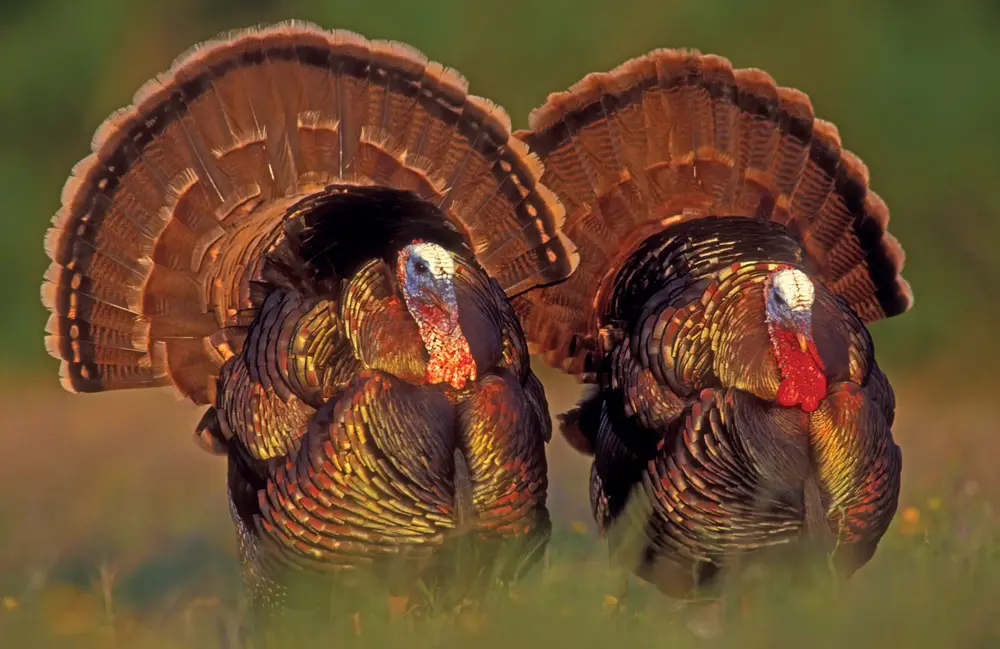
Turkey Hunting in Wisconsin
Turkeys are deers of the avian world. Capable of living everywhere from swamps to forests, they make for one of the most iconic hunting trophies. They also happen to be the main guests of every Thanksgiving table, which makes turkeys even more prominent in hunters’ circles. While pursuing one of the state’s most challenging game birds is not easy, all the effort pays off once you get your hands on one. And only one, per season. Here are some other turkey hunting regulations for the season 2024.
Turkey Season Dates
2024 Spring Turkey Youth Hunt | April 13–14 | |
Spring 2024 | Period A | April 17–23 |
Period B | April 24–30 | |
Period C | May 1–7 | |
Period D | May 8–14 | |
Period E | May 15–21 | |
Period F | May 22–28 | |
Fall 2024 | Zones 1-5 | Nov. 23 – Jan. 5, 2025 |
| Statewide | Sept. 14 – Nov. 22 |
Turkey Hunting Licenses
To hunt wild turkey in Wisconsin, hunters need a turkey harvest authorization (formerly known as a carcass tag/permit), a turkey license, and a wild turkey stamp. These can be obtained via the Go Wild app, with an annual turkey stamp, spring and fall turkey licenses, and harvest authorizations included with Conservation Patron Licenses or Senior Citizen Recreation Cards. The spring turkey harvest authorization is obtained through a drawing or purchased as a bonus harvest authorization.
Turkey Hunting Regulations
Turkey hunting regulations emphasize the importance of sticking to ethical hunting practices.
- Bait is not to be used.
- Dogs are allowed for hunting in the fall season across Wisconsin but are not permitted in the spring season.
- Registration of harvested turkeys is mandatory by 5 p.m. the day after the harvest.
- Safe hunting practices are strongly encouraged, including wearing blaze orange during transit and ensuring a backdrop wide enough to protect from errant shots.
Turkey Bag Limits
- Spring Season: The bag limit is one bearded or male turkey per spring turkey harvest authorization.
- Fall Season: The bag limit is one turkey of any age or sex per fall turkey harvest authorization.
Legal Hunting Hours
Hunting hours are set at 30 minutes before sunrise to sunset. Since the time of both changes from day to day, we recommend taking a look at Turkey Shooting Hours docs, available on the corresponding Wisconsin Department of Natural Resources page.
Turkey Harvest Report & Tagging
Hunters must register their turkey by 5 p.m. the day after the harvest, exclusively through electronic means available 24/7. No in-person registration stations are available. Registration requires the harvest authorization number, date and time of harvest, location (county and turkey management zone), and turkey’s age and sex. After successfully registering, hunters receive a 10-character confirmation number for their records.
Spring Season Application and Drawing System
- Spring Turkey Drawing: Harvest authorizations are issued through a preference-based drawing system, where applicants can specify two-time period-zone combinations and one zone they’d accept at any time, maximizing the chances of receiving a harvest authorization. Applications are due by December 10 each year, with a $3 application fee.
- Preference Points: Applicants who did not receive a turkey harvest authorization the previous season are awarded preference points, enhancing their chances in future drawings. Points accumulate but expire if not applied at least once in 3 years.
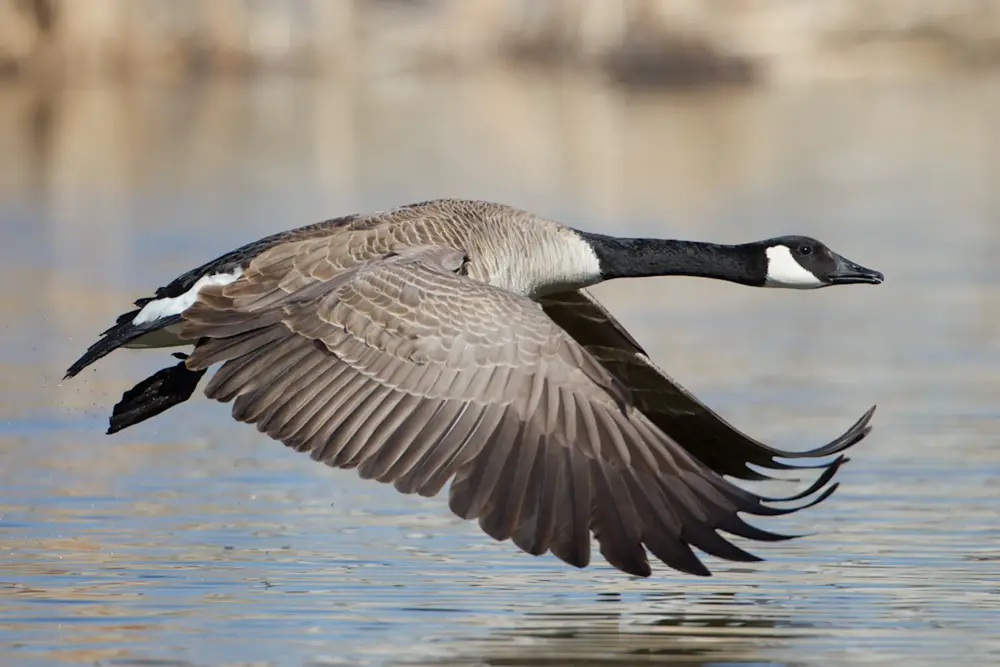
Waterfowl & Migratory Birds Hunting in Wisconsin
Wisconsin abounds in birds other than turkey, game birds, most importantly. If you prefer to hunt ducks and geese near bodies of water, Wisconsin just happens to rest precisely between two Great Lakes: Lake Michigan and Lake Superior. One can expect copious numbers of waterfowl of all stripes, even if ducks and geese don’t float your boat anymore. Here are the regulations for the 2024 waterfowl and migratory birds hunting season in Wisconsin.
Waterfowl & Migratory Birds Season Dates
Early Teal | Sept. 1-9 |
Early Goose | Sept. 1-15 |
Rail (Virginia, Sora) | Sept. 1 -Nov. 9 |
Snipe | Sept. 1 -Nov. 9 |
Common Gallinule | Sept. 1 -Nov. 9 |
Mourning Dove | Sept. 1 -Nov. 29 |
Woodcock | Sept. 21 -Nov. 4 |
Youth Waterfowl | Sept. 14-15 |
Northern Duck Zone | Sept. 21- Nov. 19 |
Southern Duck Zone | Sept. 28 -Oct. 6, Oct. 12 -Dec. 1 |
Open Water Duck Zone | Oct. 12 -Dec. 10 |
Coot | *Same as a duck for each zone |
Northern Goose Zone | Sept. 16 -Dec. 16 |
Southern Goose Zone | Sept. 16 -Oct. 6, Oct. 12 -Dec. 1, Dec. 21 -Jan. 9, 2025 |
Mississippi River Goose Zone | Sept. 16 -Oct. 6, Oct. 12 -Dec. 1, Dec. 21 -Jan. 9, 2025 |
Hunting Licenses
To participate in waterfowl bird hunting, individuals must have the proper licenses, stamps, and registrations, which include:
- Small Game License
- State Waterfowl Stamp
- Federal Migratory Bird Hunting Stamp
- Early Canada Goose Permit (for early goose season)
- Harvest Information Program (HIP) Registration
Licenses, stamps, and permits can be purchased through the Go Wild system or at a license sale location.
Safety Regulations
Safety is paramount in waterfowl hunting, especially considering the cooling water temperatures during fall. Hunters are strongly advised to wear life jackets, ensure their boat is properly sized and balanced, establish a safe fire zone with partners and stick to other safety rules of hunting on or near water.
Waterfowl & Migratory Birds Daily Bag Limits
The bag limits for waterfowl vary by species and season:
- Ducks: 6 ducks, with specifics on types such as mergansers, mallards, wood ducks, etc.
- Regular Goose: Three birds daily bag limit, increasing to five birds daily for the holiday hunt in the Southern and Mississippi River Zones.
- Rail: 25
- Early Teal: 6 teal.
- Mourning Dove: 15 doves.
- Woodcock: 3 birds.
Legal Hunting Hours
Hunting hours for waterfowl are from 30 minutes before sunrise to sunset. Hunters should consult the Waterfowl Shooting Hours documents available on the Wisconsin Department of Natural Resources page for specific times.
Harvest Report & Tagging
Waterfowl hunters must register each year with the federal Harvest Information Program (HIP), placing them on a list of hunters who may receive a mailing requesting a summary of their harvest. HIP registration is free and can be done at the time hunters purchase their licenses. It can be added later if a hunter decides to pursue migratory game birds.
Additionally, hunters who harvest or find banded birds are encouraged to report their findings according to the information listed on the DNR’s banded bird recovery webpage.

Small Game Hunting in Wisconsin
Finally, there is small game hunting which can be just as exciting as bigger species. This category covers some of the remaining game bird species, as well as some of the more compact mammals and furbearers.
Small Game Season Dates
Game Birds:
Pheasant | Statewide | Oct. 19 (9 a.m.) – Jan. 5, 2025 |
Ruffed grouse | ||
Zone A | Sept. 14 – Jan. 5, 2025 | |
Zone B | Oct. 19 – Dec. 8 | |
Crow | ||
Statewide | Nov. 23 – March 26, 2025 |
Hungarian partridge | Statewide (closed in Clark, Marathon, and Taylor counties) | Oct. 19 (9 a.m.) – Jan. 5, 2025 |
Bobwhite quail | Statewide | Oct. 19 (9 a.m.) – Dec. 11 |
Small Game Mammals and Furbearers:
Squirrels (Gray and Fox) | Sept. 16, 2023 – Feb. 29, 2024 |
Cottontail Rabbit | Northern Zone: Sept. 16, 2023 – Feb. 29, 2024 Southern Zone: Oct. 14 (9 a.m.), 2023 – Feb. 29, 2024 |
Fox (Red and Gray) | Oct. 14, 2023 – Feb. 15, 2024 |
Coyote | Year-round |
Raccoon | Resident: Oct. 14, 2023 – Feb. 15, 2024 Nonresident: Oct. 28, 2023 – Feb. 15, 2024 |
Bobcat | Period 1: Oct. 14 – Dec. 25, 2023 Period 2: Dec. 26, 2023 – Jan. 31, 2024 *Permits required |
Weasel, Woodchuck, Porcupine, Opossum, Skunk and Snowshoe Hare | Year Round |
Small Game Licenses
To hunt small game in Wisconsin, hunters must obtain the appropriate licenses from the Wisconsin Department of Natural Resources (DNR).
- Small Game Hunting License
- Any additional permits or stamps, specific to the species being hunted, such as a Bobcat Permit.
Small Game Regulations
Some species like the weasel, woodchuck, porcupine, opossum, skunk, and snowshoe hare have no specific bag or season limits, but a license is still required to hunt these animals.
A few days ago, gray wolves were delisted from the Endangered Species Act. Since the dates for all other hunting seasons have already been specified, it’s yet unclear whether wolves will be reintroduced for hunting this year or the following one. But, gray wolves are back on the list, so keep an eye out for them.
Small Game Daily Bag Limits
- Pheasant: 1 bird daily on opening weekend, 2 birds daily for the remainder of the season
- Bobwhite Quail: 5
- Ruffed Grouse: 5 for Zone A, 2 for Zone B
- Gray (Hungarian) Partridge: 3
- Crow: 15
- Gray and Fox Squirrels: 5
- Cottontail Rabbit: 3
- Bobcat: 1 by permit
There are no bag limits for the rest of the species specified.
Legal Hunting Hours
Hunting hours for small game are from 30 minutes before sunrise to sunset. Hunters should consult the Small Game Shooting Hours documents available on the Wisconsin Department of Natural Resources page for specific times.
Harvest Report & Tagging
Bobcat: Hunters must register their bobcat harvest with the DNR by 5 p.m. the day after recovery, either through GameReg or by calling 844-426-3734. Additionally, the hunter must present the bobcat (separated pelt and carcass) to an authorized DNR representative for certification no later than seven days after the month of harvest.
Registration isn’t required for the remaining small game species.
FAQs
The deer season for archery and crossbow hunting runs from September 14, 2024, to January 5, 2025.
Hunters must have a valid deer hunting license along with appropriate tags or harvest authorizations for the zones they plan to hunt in.
Elk hunting licenses are awarded through a lottery system. Interested hunters must apply for a chance to obtain a license.
The bag limit in Wisconsin is one bear per permit.
Yes, Wisconsin offers separate hunting seasons for turkey in the spring and fall, with specific dates and regulations for each.
Hunters must possess the Federal Duck Stamp, a Wisconsin Waterfowl Stamp, and complete the Harvest Information Program (HIP) registration, in addition to their small game hunting license.
Legal hunting hours for migratory birds typically extend from 30 minutes before sunrise to sunset but may vary by species and season.
Most game animal harvests, including deer and elk, must be reported electronically via the Wisconsin DNR’s Go Wild system or by phone. Alternatively, you can have your game registered at a designated register station.

